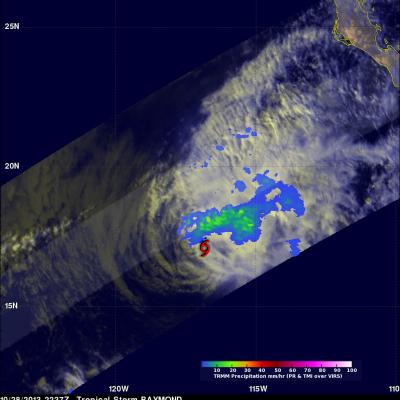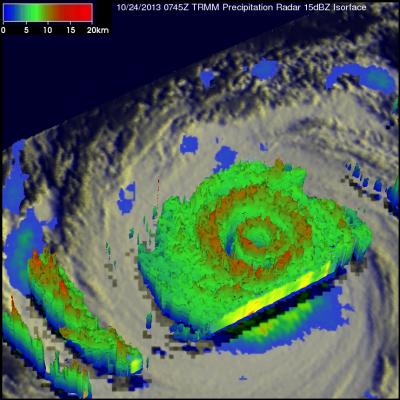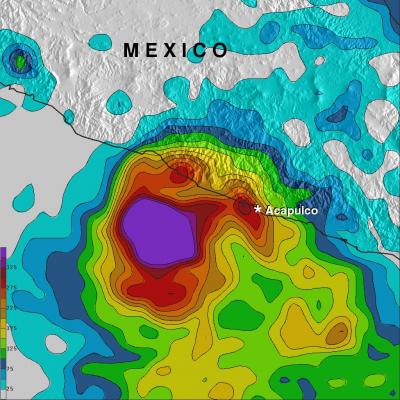6th International Workshop for GPM Ground Validation
Dates
Location
Rome, Italy
The Sixth International Ground Validation Workshop will be held November 5 -7 in Rome, Italy, at the headquarters of the National Research Council of Italy (CNR), Institute of Atmospheric Sciences and Climate (ISAC). The workshop is organized in coordination with NASA’s Precipitation Measurement Missions Science Program.
Mission Affiliation
Tropical Storm Raymond Fading Fast
There has been some recent convective activity within tropical storm Raymond but southwesterly wind shear and cooler ocean temperatures are predicted by the National Hurricane Center (NHC) to weaken the tropical storm to a remnant low on Wednesday October 30, 2013. Raymond contained rainfall only in an area northwest of it's center of circulation when the TRMM satellite passed above on October 28, 2013 at 2337 UTC (4:37 PM PDT). Rainfall data from TRMM's Microwave Imager (TMI) and Precipitation Radar (PR) are shown overlaid on a combination visible and infrared image from TRMM's Visible and
GPM Successfully Completes Performance and Functional Testing
An engineer stands in front of the GPM Core Observatory in the EMI testing chamber. GPM has successfully completed post-environmental Comprehensive Performance and Functional testing. These tests are performed to verify that the GPM Core satellite still meets all of its requirements after completing a suite of environmental tests (thermal/vacuum, electromagnetic interference/electromagnetic compatibility, vibration/acoustic/shock). The satellite is now being prepared for shipment to the HII-A launch site in Tanegashima, Japan.
TRMM Sees Two Pacific Tropical Cyclones
Tropical Storm Lekima Tropical Storm Francisco The TRMM satellite flew above the centers of two tropical cyclones in the western Pacific Ocean early this morning. The first orbit saw super typhoon LEKIMA at 0745 UTC and with the next orbit tropical storm FRANCISCO came into view at 0919 UTC. Lekima was located southeast of tropical storm Francisco over the open waters of the Pacific. Precipitation data from TRMM's Microwave Imager (TMI) and Precipitation Radar (PR) instuments are shown overlaid on infrared images from TRMM's Visible and InfraRed Scanner (VIRS). These rainfall analyses show the
Hurricane Raymond's Copious Rainfall Analyzed
Powerful hurricane Raymond, located off Mexico's south-central Pacific coast, has weakened to a tropical storm. It has now started to move slowly away from the location where it has been parked since Monday October 21, 2013. Raymond dropped abundant rainfall in much of the same area already hit by deadly flooding and landslides with Hurricane Manuel last month. The rainfall analysis above was made at Goddard Space Flight Center using TRMM-based, near-real time Multi-satellite Precipitation data (TMPA) collected during the period from October 15 to 23, 2013. Rainfall totals greater than 125mm (




